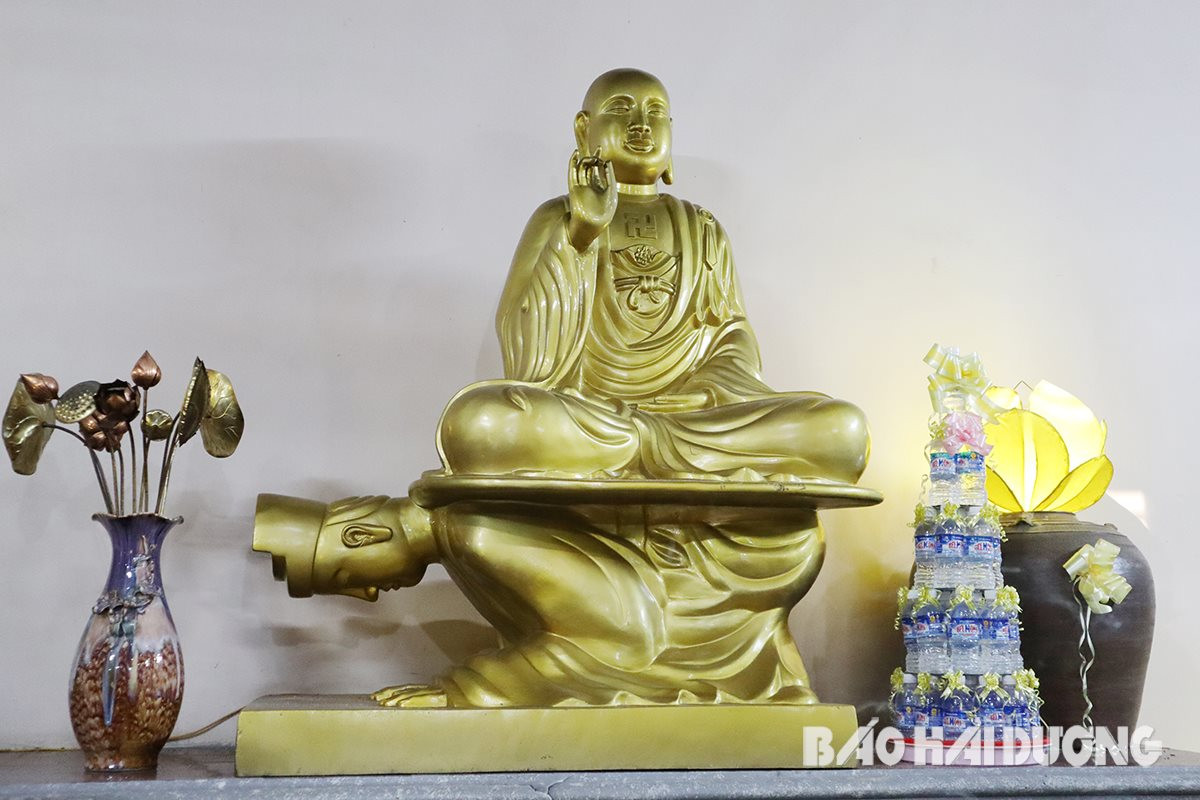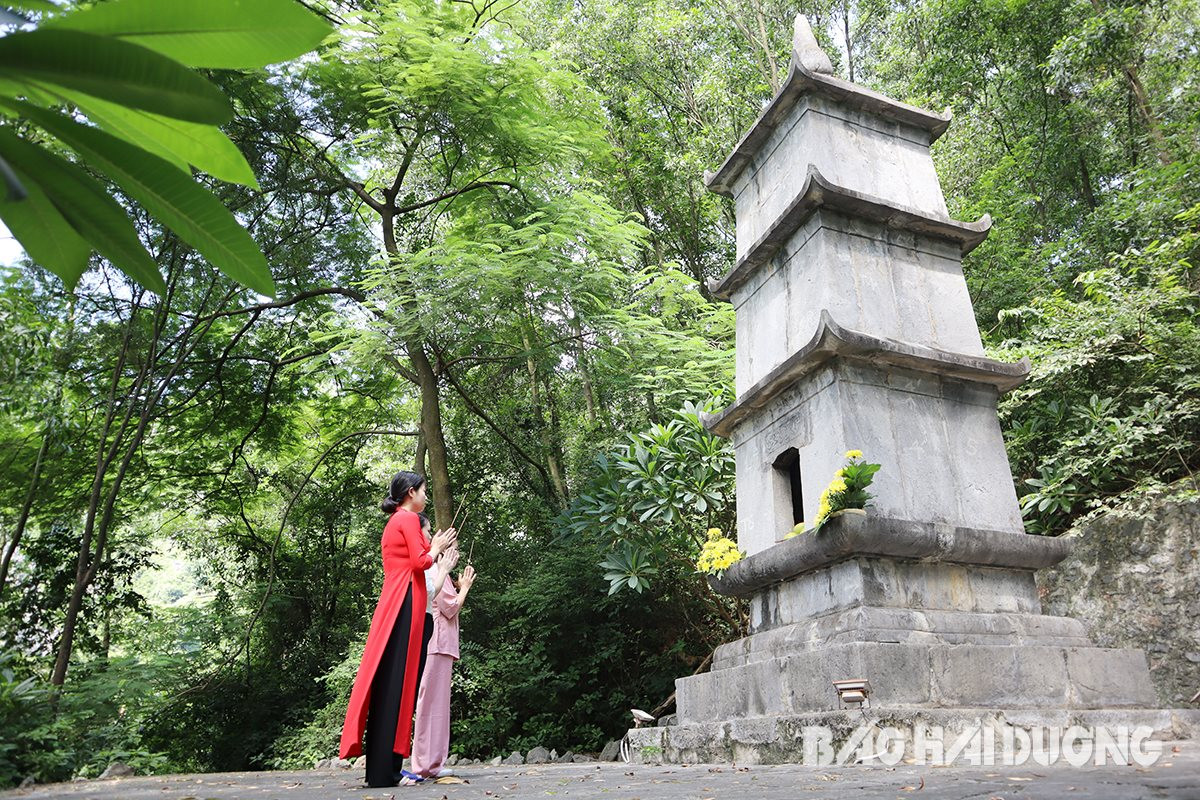Nham Duong Pagoda, Duy Tan Ward (Kinh Mon, Hai Duong) has many interesting things, including the statue of "Buddha sitting on the king's back".

Strange statue
During the first days of the new year, Ms. Tran Thi Oanh from Hai Phong and her family went to Nham Duong Pagoda to worship Buddha. Not only did she feel at peace when she returned to the Zen temple, Ms. Oanh also witnessed many interesting things about the pagoda. "This is the first time I have seen a statue of Buddha sitting on the back of a king in a pagoda," Ms. Oanh said.
The statue of “Buddha sitting on the king’s back” that Ms. Oanh mentioned is also called “Repentant King” or double statue. The statue consists of a Buddha with hands in a mudra, compassionate, sitting on the back of a king in a kneeling position.
The statue of Buddha sitting on the back of a person, especially a king, is unprecedented, breaking the traditional structure in the art of Buddha sculpture (usually sitting on a lotus pedestal). This is what makes the statue unique and special.
Nun Thich Dieu Mo, abbot of Nham Duong Pagoda, said that not only Ms. Oanh, but also many visitors from all over the world are surprised by the statue. The statue is 1m65 high, cast in 2013 from a single block of bronze, and weighs 2 tons.
"The statue depicts the story of the King repenting to the founder Tong Dien, the second founder of the Vietnamese Cao Dong Zen sect," said nun Thich Dieu Mo.
"The King of Repentance"
Nham Duong Pagoda, also known as Thanh Quang Pagoda, was built during the Tran Dynasty. This place used to be a Buddhist center during the Tran and later Le dynasties and has been preserved and promoted to this day.

Nham Duong Pagoda is known as the ancestral place of the Cao Dong sect in Vietnam, where many eminent monks and Zen masters appeared, famous for their contributions to protecting the country and the people. In addition to Zen Master Thuy Nguyet, the First Patriarch of the Cao Dong Zen sect in Vietnam, the founder of Nham Duong, this place is also associated with the name of the Second Holy Patriarch Tong Dien.
Zen Master Tong Dien, whose real name was Chan Dung (1640-1711), was the second patriarch of the Cao Dong Zen sect in Vietnam. According to “Vietnamese Zen Masters” compiled by Venerable Thanh Tu: Zen Master Tong Dien’s secular name is unknown. His hometown may have been in Phu Quan village, Cam Giang district, Hai Duong province. He died on July 16, Tan Suu year, Vinh Thinh era (1711), at the age of 72.
During the reign of King Le Hy Tong, Buddhism was no longer the state religion because the king believed that it was not beneficial to society. In the year Vinh Tri (1678), King Le Hy Tong issued a decree to expel all monks and nuns into the forest, and those who did not go would be punished. Monk Tong Dien was heartbroken when he heard this news. He left the mountains and returned to the capital to present a memorial of warning, the content of which recorded the benefits that Buddhism brought to society, and the respect for Buddhism that led to the prosperity of the country. After reading the memorial, the king was imbued with the teachings, sincerely repented, and respected him. At that time, King Le Hy Tong specially bestowed the title of National Teacher on the Second Patriarch Tong Dien, allowing him to sit before the king in the main hall to discuss state affairs. Expressing his repentance for having incorrect policies towards Buddhism, King Le Hy Tong had a double statue carved: "Buddha sitting on the king's back" - the king kneeled so that Buddha could sit on his back, showing his sincere repentance. This statue is therefore called "King of Repentance", and is currently located at Hoe Nhai Pagoda (Hanoi).
“Nham Duong Pagoda is the ancestral home of the Cao Dong sect in Vietnam, associated with its founders. The statue of the repentant King at the pagoda’s ancestral house was cast according to the original model at Hoe Nhai Pagoda to commemorate the merits of the second patriarch Tong Dien,” said nun Thich Dieu Mo.
Currently, at Nham Duong pagoda, there is still the ancient Dieu Quang tower containing his relics.
LE HUONG